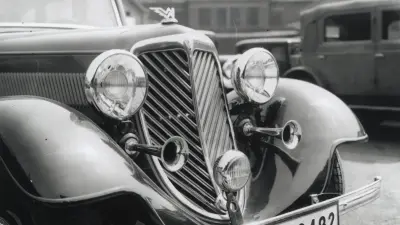The Bosch bicycle light
It all started with a NO!
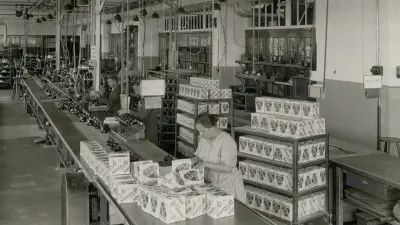
Darkness, rain and fog were no match for the new Bosch bicycle light: It shone and provided good visibility. This made cycling safer. Also, the Bosch bicycle light was affordable even in difficult times.
“No, no, no! A bicycle light would be wholly incompatible with our business principles!” Director Max Rall was vehemently opposed to the suggestions made by Bosch engineer Hermann Steinhart to improve ordinary bicycle lights. Bosch produced automotive technology, such as ignition, lighting, battery, and horn systems. So why did the company need a bicycle light on top of that? By 1923, inflation — a long-standing problem in Germany in the years immediately following the first world war – had reached its peak. People’s savings and assets had become worthless. Cars and motorcycles alike had become too expensive for most of the country’s citizens. Those who wanted or needed to be mobile relied on bicycles.

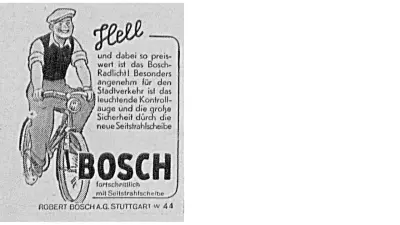
In the end, Steinhart’s persistence paid off: the bicycle light was approved for production. In fall 1923, Bosch unveiled the innovative bicycle light at the Berlin Automobile Exhibition. An electric motor hidden within Bosch’s booth powered a wheel. Transfixed, visitors to the exhibition stood and watched the bicycle light, which was mounted on the wheel setup, glow brightly. Even at the slow speed of 5 kilometers per hour (one that a cyclist could easily reach by simply pushing a bike), the bicycle light generated enough brightness.
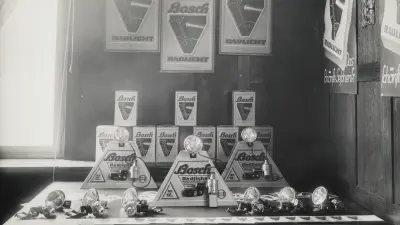
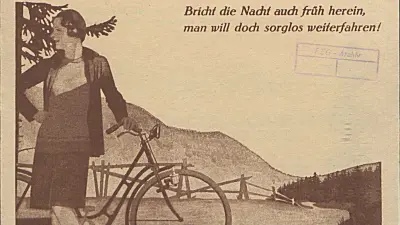
For a long time, bicyclists had been envious of the electric headlights used by motorists. The oil and carbide lamps customary at the time got sooty quickly, were difficult to handle, and required extensive maintenance. The rainproof Bosch bicycle light, by contrast, provided strong illumination. Not only that, it was lightweight, maintenance-free, and easy to mount. Consisting of a generator, headlight, holder, and wiring, the principle behind it was simple: bicyclists pushed down the generator, with its rotating wheel, until it made contact with the tire. During riding or pushing, the generator reliably provided the electricity needed to power the headlight.
Alongside its technical advantages, the relatively low price of the bicycle light contributed to its tremendous success. After the currency revaluation in mid-November 1923, the bicycle light became available for 18 Rentenmarks — the same price as 5 kilograms of coffee at the time. Technical innovations helped keep the Bosch bicycle light a roaring success for many years to come. Nevertheless, Bosch stopped making the product in 1960. Its scope for development had been largely exhausted, and Bosch had found new growth areas. Despite being coined much later for a completely different field, the slogan “safe, clean, economical” would undoubtedly also have been a good fit for the Bosch bicycle light.

Author: Angelika Merkle

